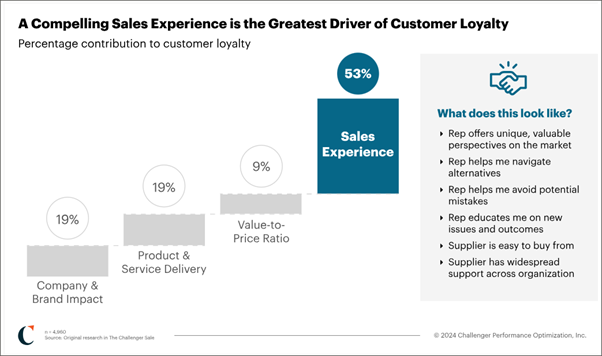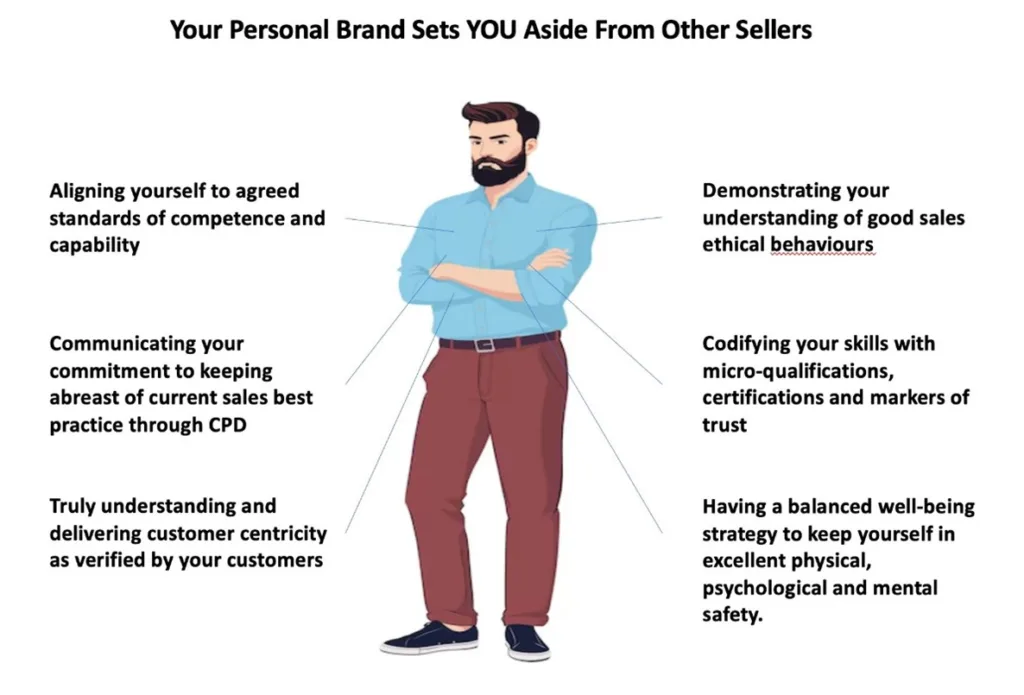As salespeople, we expect our company to drive product and sales awareness for us. Justifiably so, we’re the salespeople. Our job isn’t to attract prospects but to close them.
Marketing does the attraction; they do the branding; they create product and company awareness, and sales closes the deal. This functional contract has been the agreed-upon approach since the term marketing first became an established practice in the early 1900s 1
Unfortunately, however, like most things, times change, and too many salespeople still need to get the memo.
Today, information is flowing at an unprecedented rate. It’s like nothing we’ve ever seen. We’re inundated with information every second of the day. This deluge makes relying on marketing to drive company and brand awareness for your sales success, short-sighted.
Effective marketing takes a lot of work. Marketers are putting out good content. They’re targeting the right people. Yet they are fighting a losing battle. They’re fighting for eyeballs. They are fighting for engagement. They’re competing with all the other companies that are in the same space. They’re fighting with your competition and everyone else for attention, and they’re losing. It’s just too busy, it’s too noisy.
How does one break through “the noise”?
The problem is marketing is representing a company and its products. There is no personal connection. Marketing isn’t a person. Marketing is a big, impersonal machine trying to get into our wallets, and that is their Achille’s heel. It’s not entirely marketing’s fault.
Marketing needs the human element that it lacks.
Here’s the deal…
Enter you, the salesperson.
Selling in the 21st Century is about engagement, empathy, and understanding. It’s about connecting with people to create value and solve problems. CEB’s epic book The Challenger Sale reinforces this point in their research, which shows that the salesperson is the most critical element in creating loyalty to a brand. 2

This shift to a more human-to-human element has ushered in a new era of salesperson branding.

When salespeople develop a brand around themselves, they take the impersonal to the personal. Salespeople are people and because of that they play at the individual level. They have the human element, and that’s a game changer.
Salespeople with personal brands are not emotionless machines or corporations but human beings with ideas, opinions, knowledge, and insight. These attributes drive the creativity that can solve a problem, make a recommendation and assist in helping people reach their goals. It’s this personal element that changes the game.
If you’re a salesperson who is looking for an edge, develop your brand. To augment what you’re already getting from your company, look no further than your profile on LinkedIn, your Twitter handle, or your (yet-to-be-built) blog.
As I said, I will look at this from the opportunity vantage point because building a personal selling brand is still an opportunity. How long will it stay an opportunity before it crosses the chasm to a must-have and then a competitive disadvantage if you don’t have one? I can’t say. Therefore, jumping on it now is the only smart choice.
The key to building an attractive personal sales brand is simple: create, distribute and share valuable and relevant content about your industry, its problems and their solutions, trends and your insights. Build a presence on LinkedIn that conveys a fantastic knowledge of the products and services you sell – and how they help to improve a business. Create a weekly LinkedIn pulse article that discusses trends in your space. Ask open-ended questions in your timeline about solving irritating problems those in your industry struggle with. Share killer content other industry experts share. Point people to good content across the web. Be a connector of information, people, and solutions.
Your goal is simple: to build an identity and brand that draws people to you and creates reach. By doing so, potential prospects and buyers will find you and your products and services. Just as prospects engage with your company brand, they will engage with you.
They will look to you for support. They will ask you questions. They will rely on you for insight. They will engage.
Building a personal brand in sales is more than playing around with LinkedIn and counting followers and connections. It’s about creating your lead generation engine. Why wait for marketing to do it? Why put your success in the hands of other people? There has been no better time to be your lead generation machine than now.
If you don’t have a personal sales brand driving prospects and potential buyers to you, you’re not playing at a high enough level. You’re leaving opportunity on the table. The 21st Century has delivered a new and compelling way to drive sales and build your pipeline, that is, if you want to use it.
Be something other than a 20th Century seller in the 21st Century.
Andrew.hough@the-isp.org Andrew.hough@cranfield.ac.uk
References:
1 Bartels (1988) proposes that the term ‘marketing’ was first used ‘as a noun’, that is, as a label for a particular practice, sometime ‘between 1906 and 1911’
2 Challenger Inc – How b2b buyers make decisions.